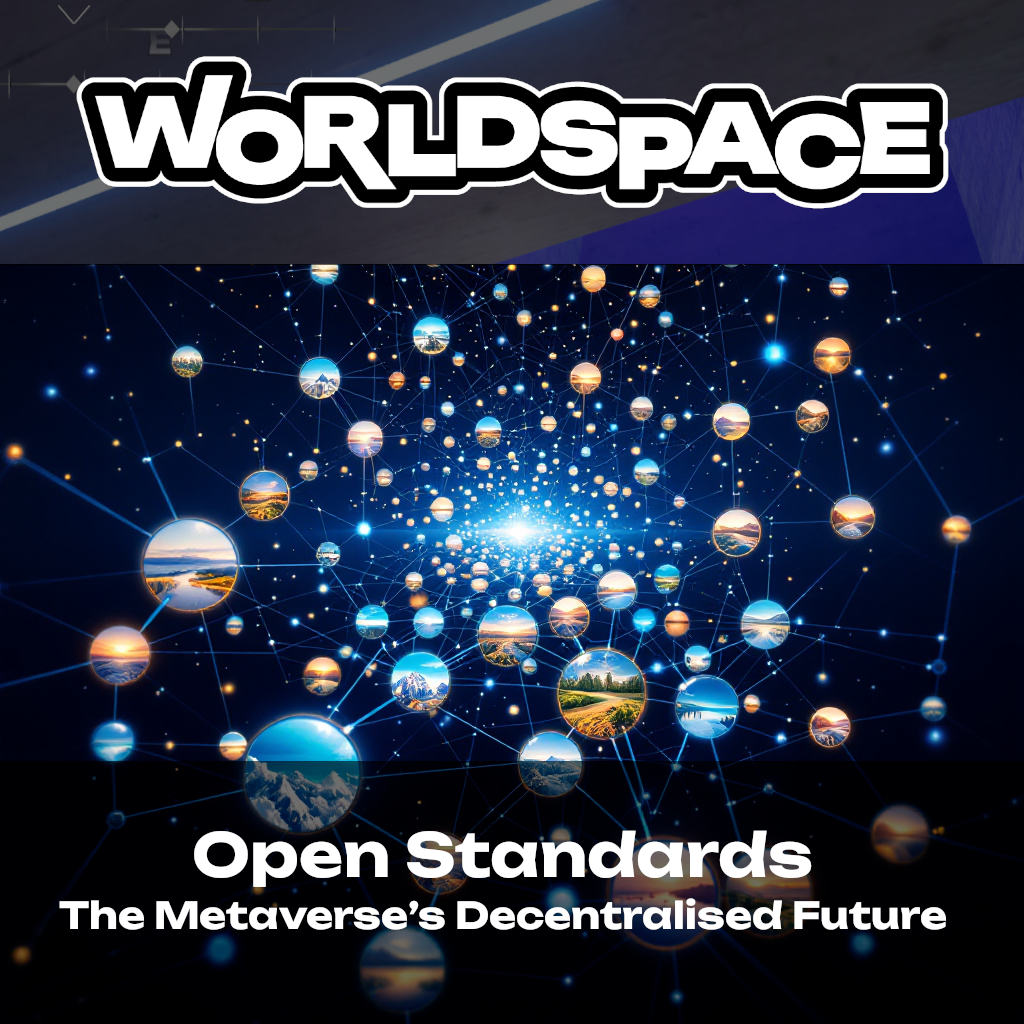Open Standards: The Metaverse’s Decentralised Future
Many people still talk about The Metaverse as though one company will switch it on and invite the rest of us inside. That sounds neat, but history suggests that ultimately the opposite will manifest. When the web first appeared, we didn’t visit a single “big website”. Instead, thousands of sites cropped up, and our Netscape Navigator browsers moved between them because all of those websites used the same protocols. I expect the Metaverse to follow that older, healthier pattern. i.e. A distributed system of independent, visitable locations.
Real signs of that future are already visible. The Metaverse Standards Forum, side-by-side with Web3-native groups like OMA3, is drafting common formats for avatars, scenes and digital-asset rights so that elements that we build in one world can be ported instantly in another.
However, accessing these Metaverse environments still depends on the monolithic single-sign-on model we know from today’s web or a standard login provided directly by that Metaverse developer. A handful of giants hold our SSO log-in tokens and, with them, a great deal of leverage. The next step is to put those keys in our own pockets. W3C finalised Verifiable Credentials 2.0 only last week, and the updated Decentralised Identifier spec is hot on its heels. Both live on public blockchains, letting every one of us prove who we are, and what we’re allowed to do, without asking permission from a monolithic gatekeeper.
This identity relies on blockchain technology, and each user having their own blockchain identity record. Standards such as ERC-6551 are a way for us to own our digital identity directly in the blockchain in the form of Etherium NFTs, with specific flexibility to include representations of asset ownership, avatar configuration, proof of age, proof of purchases and more.
Crucially, the Metaverse isn’t just head-mounted VR as was Mark Zuckerberg's vision. When you lift a phone or slip on smart glasses, the same blockchain identity can hand over just enough data for the café counter in front of you to float personalised specials in mid-air, or for a museum to overlay captions in your language. Virtual Reality, fully immersive worlds, and augmented reality become one continuous, multidimensional Metaverse environment made up of distinctly separate experiences, built by multiple developers and companies, that enables us to move seamlessly between the physical and digital dimensions, and is ultimately device agnostic, all the while carrying with us the credentials that we own.
That vision relies on hardware makers playing ball. Speakers at this year’s XR EXPO hammered home how open APIs like OpenXR unlock a bigger ecosystem for everyone, while Google’s I/O keynote teased new XR features and quietly stressed developer-friendly standards. If headset vendors retreat into walled gardens, they’ll look less like pioneers and more like the dial-up portals that tried, and failed, to fence in the early web.
For developers, this decentralised approach is a gift. Open development, just as has been for web applications, without the need to conform to large companies' intentionally imposed constraints and limitations. For users, it means genuine control over identity and assets, and the ability to seamlessly move between 3D worlds and Augmented Reality in the physical world.
The more open these standards are, and the faster they are adopted by all stakeholders, the more accellerated and the better the progress and experience will be.
The Metaverse cannot be one firm's playground, or it will fail on many levels.

